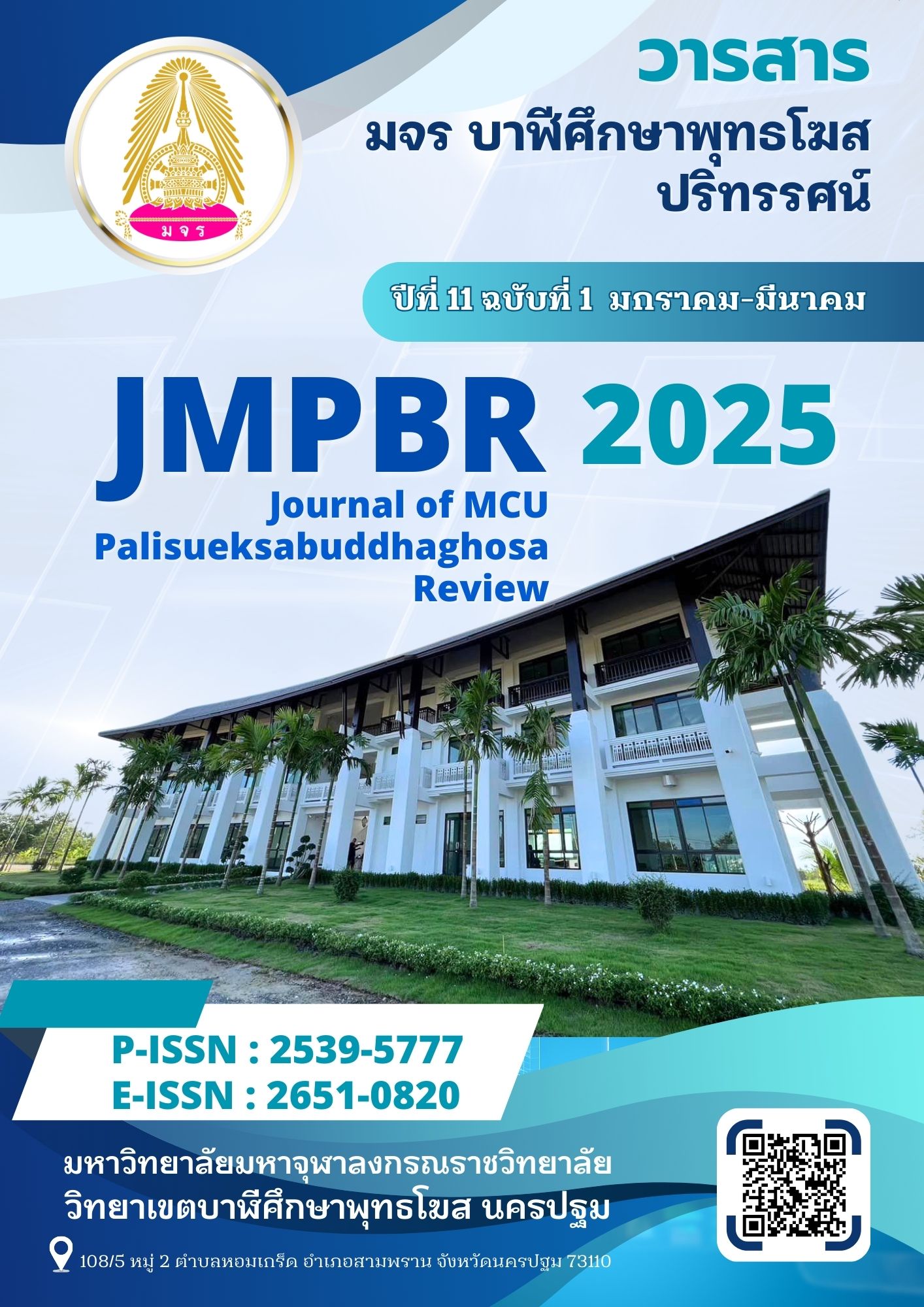An Analytical of Six Vipassanābhūmi for Vipassanābhāvanā Practice
Main Article Content
Abstract
This thesis investigated on following objectives; 1) to study the six Vipassanābhūmi in the Theravada Buddhist scriptures, 2) to study Vipassana meditation in the Theravada Buddhism, and 3) to analyze the six Vipassanābhūmi for the Vipassana practice. It was qualitative research done documents by taking data from Theravada Buddhist scriptures, namely Tipitaka, commentary, and Visuddhimagga, etc., improving, summarizing its results and using content analysis written in descriptive manner.
The results were found that Vipassanābhumi in Theravada Buddhism scriptures mean the bases of wisdom, a place for developing insight cultivation for higher knowledge level called Ñāṇa. Insight meditators must contemplate on six bases of insight practice happening, including 1) 5 Khandha, 2) 12 Āyatana, 3) 18 Elements, 4) 22 Indriya, 5) 12 Paṭiccasamuppāda, and 6) 4 noble truths, all of which are reduced to Rūpa-Nāma or forms and name or. Vipassanābhumi is an important tool for Vipassana practice to achieve the true insight knowledge, which leads to the cessation of suffering through the Noble Eightfold Path, known as the middle path. Vipassanā practice based on the Four Foundation of Mindfulness which are: Kāyānupassanāsatipatthāna, Vedanānupassanāsatipatthāna, Cittānupassanāsatipat Thāna, and Dhammānupassanāsatipatthāna. The meditator must observe all arising objects as their true nature or just only name and forms. For advanced insight practice, they must continue observing the body, sensations, mind, and all thoughts as they really are, just forms and names as appearing in various objects, such as the up and down of the stomach. By practicing like this, they will be able to discern form and name according to the six Vipassanābhūmi in order to experience Three Common Manners and to detach from all objects.
Article Details

This work is licensed under a Creative Commons Attribution-NonCommercial-NoDerivatives 4.0 International License.
Copyright Notice
The content and information in the articles published in Journal of MCU Palisueksabuddhaghosa Review, are regarded as opinions and responsibilities of article author only. It definitely does not mean that the editor must agree or share any responsibility to the author.
Articles, information, content, figure etc. that have been published in the Journal of MCU Palisueksabuddhaghosa Review is considered as the copyright of the Journal. If any individual or organization will to bring any parts of article for promote or to do anything, must be licensed only in official form from the Journal of MCU Palisueksabuddhaghosa Review.
The content and information in the articles published in Journal of MCU Palisueksabuddhaghosa Review, are regarded as opinions and responsibilities of article author only. It definitely does not mean that the editor must agree or share any responsibility to the author.
Articles, information, content, figure etc. that have been published in the Journal of MCU Palisueksabuddhaghosa Review is considered as the copyright of the Journal. If any individual or organization will to bring any parts of article for promote or to do anything, must be licensed only in official form from the Journal of MCU Palisueksabuddhaghosa Review.
References
มหาจุฬาลงกรณราชวิทยาลัย. พระไตรปิฎกภาษาไทยฉบับมหาจุฬาลงกรณราชวิทยาลัย. กรุงเทพมหานคร: โรงพิมพ์มหาจุฬาลงกรณราชวิทยาลัย, 2539.
มหามกุฏราชวิทยาลัย. พระไตรปิฎกพร้อมอรรถกถา แปล ชุด 91 เล่ม. กรุงเทพมหานคร: โรงพิมพ์ มหามกุฏราชวิทยาลัย, 2556.
ฉันทนา อุตสาหลักษณ์, พุทธปัญญาคู่มือสร้างปัญญา. กรุงเทพมหานคร: ธนธัชการพิมพ์, 2552.
พระสัทธัมมโชติกะ ธัมมาจริยะ, ปรมัตถโชติกะ ปริเฉทที่ 9 เล่ม 1. พิมพ์ครั้งที่ 6. กรุงเทพมหานคร: หจก.ทิพยวิสุทธิ์, 2554.

